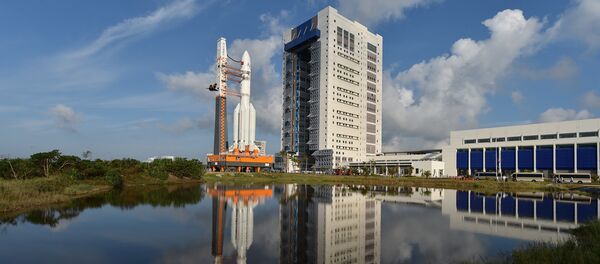India’s space agencies have taken off like a rocketship since the successful March 27 test of an anti-satellite (ASAT) missile, making the country part of an elite group of countries capable of destroying objects in space; only the US, China and Russia possess similar capability.
Next month, the DSA will coordinate with the Integrated Defense Staff of the Ministry of Defense to direct a simulated war game called IndSpaceEx to test the gaps in India’s space security as well as the strengths of its newly integrated space agencies. The exercise will be similar to those undertaken by think tanks from other countries, like the US-based Center for Strategic and International Studies (CSIS) and India’s own Observer Research Foundation, The Diplomat noted.
In April, New Delhi founded the DSA, a Bangalore-based directorate that united the functions of the once-separate Defense Imagery Processing and Analysis Center (DIPAC) in Delhi and the Defense Satellite Control Center in Bhopal, as well as the space assets formerly the responsibility of either the navy, air force or army, The Diplomat noted.
Then on Tuesday, Prime Minister Narendra Modi’s cabinet committee cleared the creation of the Defence Space Research Organization (DSRO), which will operate under the aegis of the Defense Research and Development Organization (DRDO), India’s analogue to the Pentagon’s Defense Research Projects Agency (DARPA). DSRO will directly support DSA initiatives, The New Delhi-based Asia News International reported.
Institute for Defense Studies and Analysis (IDSA) research fellow Lakshman Kumar Behera told Sputnik in early April that India needed “an exclusive Defence Space Research Agency under DRDO to focus on scientific and technical aspects that include, inter alia, space situational awareness, intelligence, surveillance and reconnaissance, directed energy weapons, electronic warfare, formation flying, and rogue satellites.”
DRDO chief G. Satheesh Reddy told reporters at the time that the agency was “working on a number of technologies like DEWs (directed-energy weapons), lasers, electromagnetic pulse (EMP) and co-orbital weapons etc. I can't divulge the details, but we are taking them forward," Sputnik reported.
"With the successful test we now need to have a dedicated infrastructure to have both defensive and offensive capabilities and that necessitates laying down of procedure sand protocols and setting a command centre," a senior space program official told Sputnik.
The Diplomat’s Rajeswari Pillai Rajagopalan noted Wednesday that while the US and Russia have ASAT capabilities, too, it’s been China’s advancement in the field of space weapons that has prodded New Delhi forward.
While China succeeded in visiting the far side of the moon for the first time on January 3 when its unmanned Chang’e-4 rover touched down, the latest example of its growing space capabilities came last Wednesday, when the China National Space Agency successfully blasted off a Long March 11 rocket with satellite payload from a mobile launch platform in the Yellow Sea, Space News reported at the time.
However, that hasn’t stopped Russia or India’s rival, Pakistan, from beginning a renewed push to demilitarize space. Last month, the two countries signed a mutual no-first-placement agreement for space-based weapons, Sputnik reported. Since 2014, Russia and China have jointly pushed for adoption of a Treaty on Prevention of the Placement of Weapons in Outer Space and of the Threat or Use of Force Against Outer Space Objects (PPWT), which the US has continually fought in spite of widespread approval from the United Nations of the treaty, Sputnik reported.
The 1967 Outer Space Treaty, a non-binding agreement that upholds the political neutrality of the heavens, is also still in force.
Washington’s renewed push for space dominance, emblematized in US President Donald Trump’s Space Force, has helped turn up the heat on nations seeking to compete in the orbital arena, too. The US has poured money into researching space-based weapons such as particle beams and creating a Space Development Agency to oversee the militarization of space.






